Composers / Fryderyk Chopin / Places catalog
Sanniki
The village of Sanniki lies 30 km north-west of Sochaczew (approx. 90 km from Warsaw). During the Middle Ages, it was one of the many settlements owned by the Dukes of Mazovia of the Płock line. When Gostynin and environs were incorporated into the Kingdom of Poland, Sanniki was made a royal estate and leased out by the nobility for several centuries. The Pruszak family, who came to these parts from Pomerelia [a historical region centred around Gdańsk], featured prominently in the development of Sanniki. In 1752, Tomasz Pruszak, the Castellan of Gdańsk, began leasing the estate. The leasehold was inherited by his nephew Aleksander, who paid it off in 1808.
The Chopin and Pruszak families had close ties. Mikołaj Chopin, Fryderyk’s father, worked in the village of Kiernozia, only 7 km from Sanniki, as a tutor for the Łęczyński family before he was married. Given the proximity of the two villages, it is safe to assume that Mikołaj knew the Pruszak family even before he began working for the Skarbek family at Żelazowa Wola in 1802. Fryderyk often visited the Pruszaks’ Warsaw residence on ul. Marszałkowska. Fryderyk went to school with Konstanty Pruszak, Aleksander’s son, and the two were very close friends. They both studied at the Warsaw Lyceum and Konstanty (known as Kostuś) was also a pupil of Mikołaj.
Chopin spent his 1828 holidays in Sanniki with Kostuś and Olesia Pruszak, at the invitation of their parents. He wrote in one of his letters to Woyciechowski: ‘I was then in Sanniki with the Pruszaks. I spent the entire summer there. I won’t write you anything about how we spent our time there; you, too, have been in Sanniki’. When he was not enjoying the many diversions on offer, Chopin worked on his compositions, such as the Rondo in C major for two pianos and the Trio for violin, cello and piano in G minor, which were still unfinished. From 1826 to 1829, Chopin studied composition under Józef Elsner at the Main School of Music in Warsaw, so these works were most likely part of an assignment that he had to submit. The drawing rooms of country manors often had pianos, so the composer almost certainly had an instrument at his disposal at Sanniki. The manor currently has a piano manufactured by Antoni Zakrzewski on which, according to Pruszak family history, Chopin played.
There is an edifying story connected with Chopin’s stay in Sanniki. The composer often went for a walk with the governess, which got tongues wagging. With typical wit, he wrote to Woyciechowski at the end of December 1828: ‘N. has brought misfortune upon a governess in a house on Marszałkowska Street. The miss has a child in her belly, and the countess, in other words, the lady of the house, no longer wishes to see the seducer. But the best thing is that they first thought that, that it seemed to all, that the seducer was me, since I spent more than a month in Sanniki, and I always went for walks in the garden with the governess. But I went for walks, and nothing more. She is not charming. I, duffer that I am, had no appetite, luckily for me’. The whole thing quickly sorted itself out, and Chopin was cleared of suspicion. The story was alluded to by a Bartłomiej Kurzeja sculpture unveiled in the park in 2014. The governess is shown listening to Chopin playing the piano.
It was thought until recently that the Pruszak manor house where Chopin stayed had not survived and that the mansion that now stands there was a 1910 building designed by Władysław Marconi. More recent studies have confirmed, however, that the mansion in Sanniki was built in the last quarter of the eighteenth century. Thus it can now be affirmed that Chopin spent his 1828 holidays in this building. The neoclassical Pruszak mansion was the first one built in the Italian villa style in Poland. In 1831, a northern wing, a tower and a pavilion were added. In 1882, an extension was added to the side of the northern wing and another to the eastern part of the mansion. The manor house has survived in this form. In 1925, its former owners, Mr and Mrs Dziewulski, installed a plaque over the entrance to the tower to commemorate Chopin’s having stayed there. The plaque reads: ‘Fryderyk Chopin stayed at this manor in 1828’. In 1930, President Ignacy Mościcki stayed at the manor.
After the Second World War, the Sanniki property was appropriated by the State Treasury. Unfortunately, it was not renovated. The house served as a dormitory for State Agricultural Farm workers and a kindergarten for their children. The decision to set up a Chopin Centre in Sanniki was made in 1976. In 1981, the head office of the Fryderyk Chopin Creative Work House and the local branch of the Fryderyk Chopin Society were set up in the renovated left wing of the building. Also set up in the manor was the Mateusz Gliński Library, which boasts numerous publications on the life and work of Chopin. In 1985, a statue of Chopin by Ludwika Kraskowska-Nitsch was unveiled in the park to mark the composer’s stay.
In 2011–2014, the manor and its grounds were thoroughly renovated and rearranged. The building is now the head office of the Fryderyk Chopin European Artistic Centre. The Centre organises many cultural events and ensures that conditions are suitable for creative, educational, scholarly and artistic activities. Regional folk traditions are also cultivated in Sanniki. ‘Niedziela Sannicka’ [Sanniki Sunday] is an annual folklore event held in Sanniki on the first Sunday of June.
Also well worth a visit is the nineteenth-century neoclassical Holy Trinity Church, opposite the manor house.
-
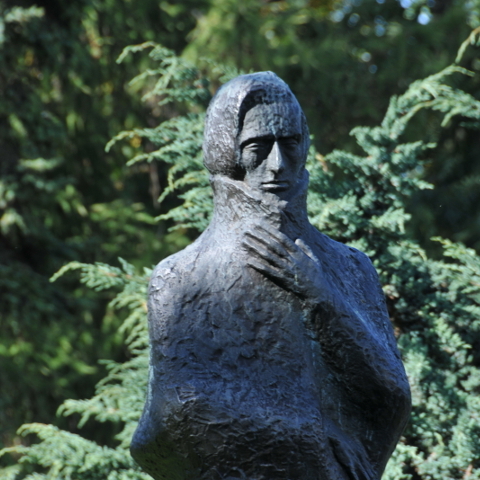
Chopin monument. Phot. from Chopin 2010 Celebration Office archive.
-
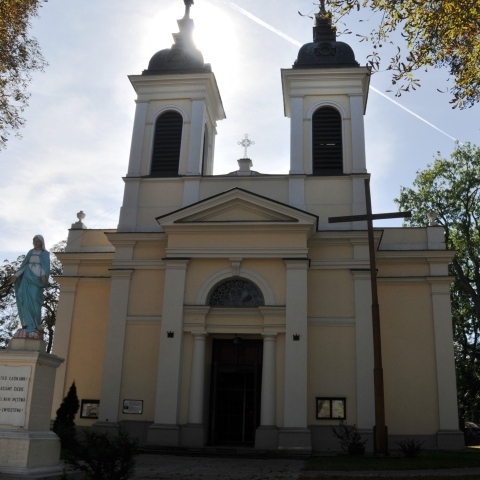
Church of the Holy Trinity. Phot. Czesław Czapliński.
-
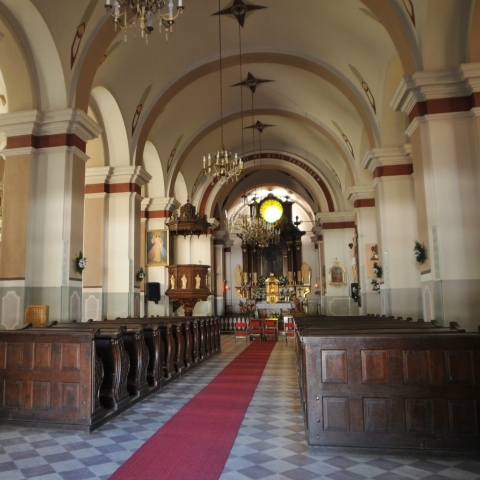
Interior of the Church of the Holy Trinity. Phot. Czesław Czapliński.
-
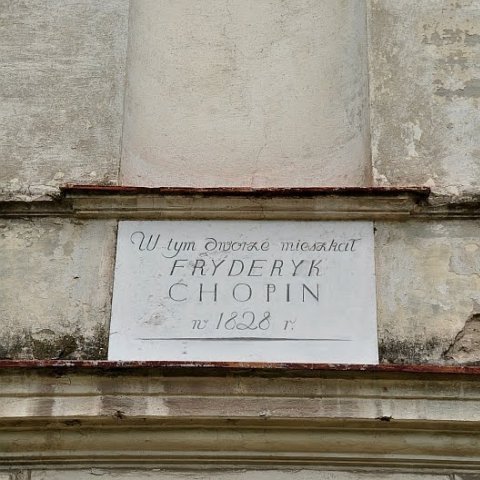
Memorial plaque. Phot. Krzysztof Zagajewski.
-
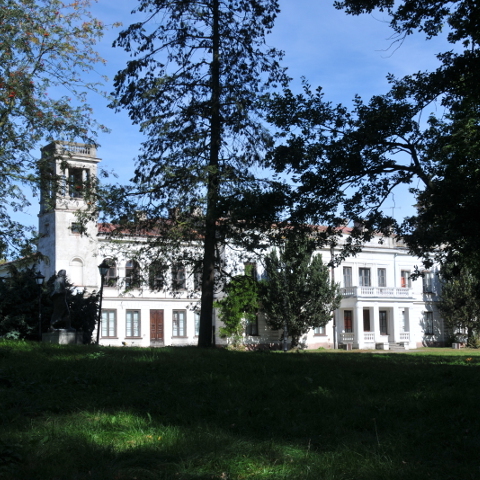
Sanniki Palace. Phot. from Chopin 2010 Celebration Office archive.